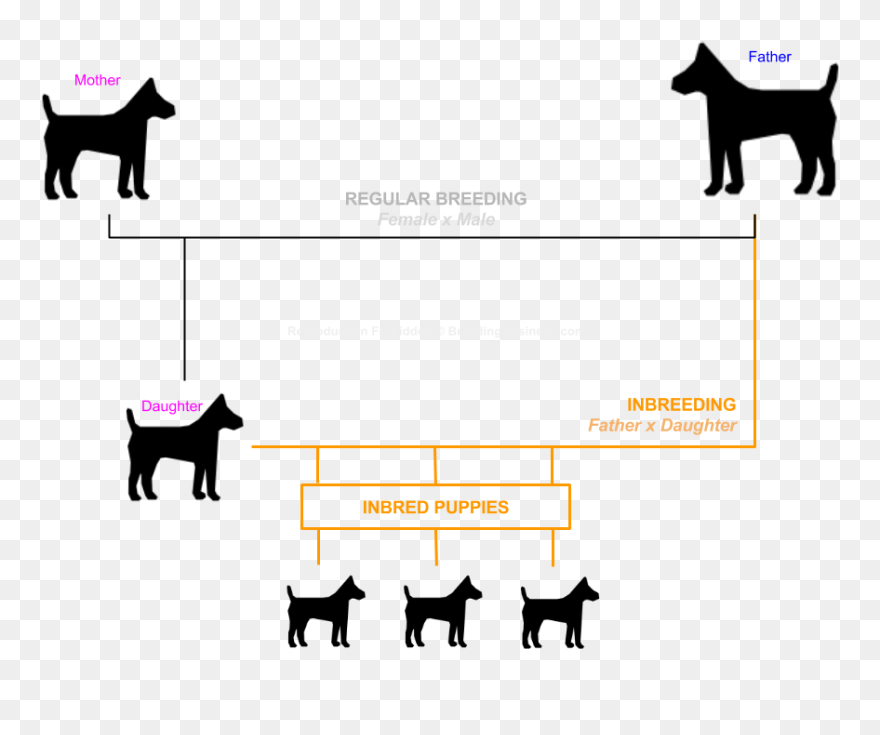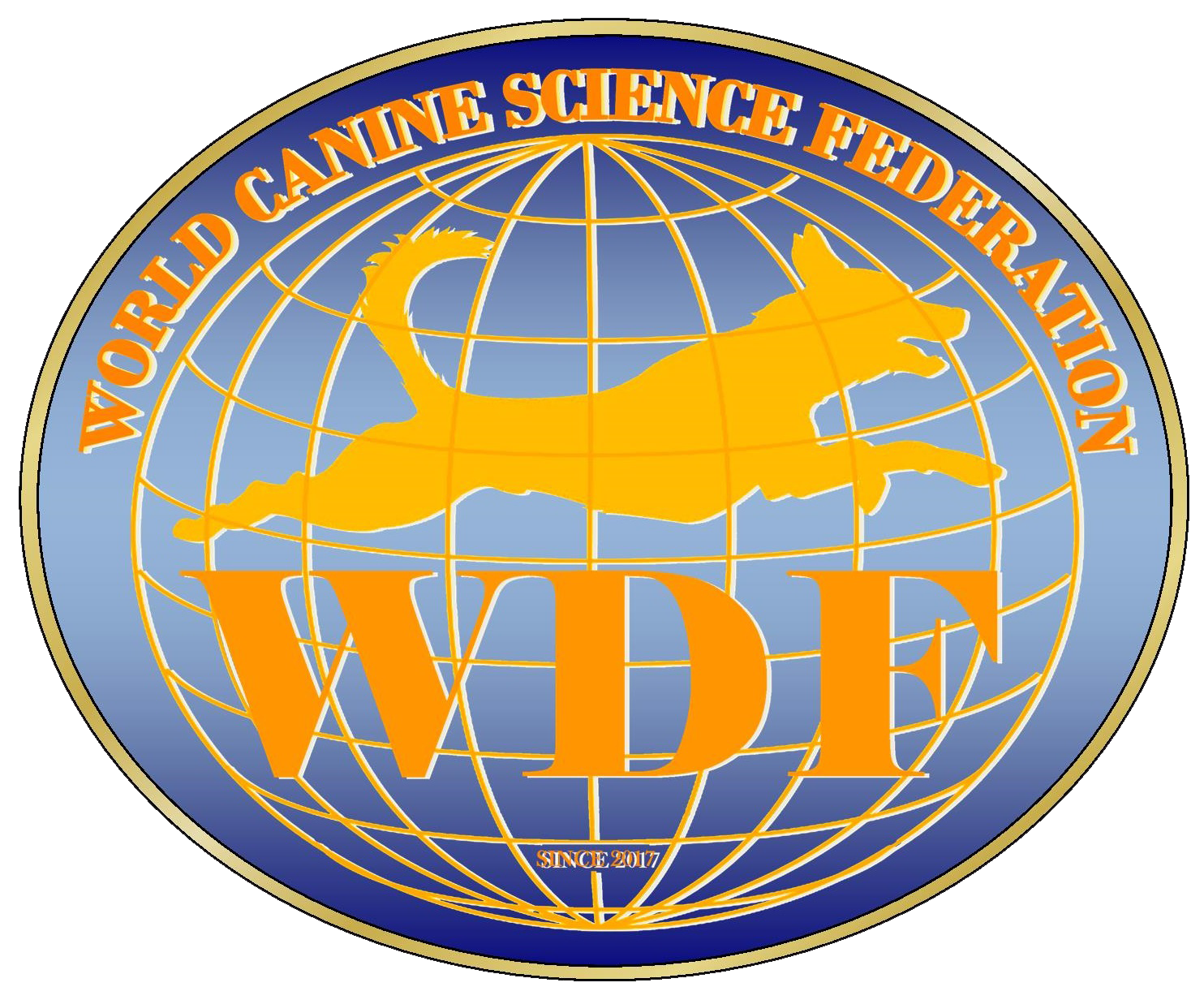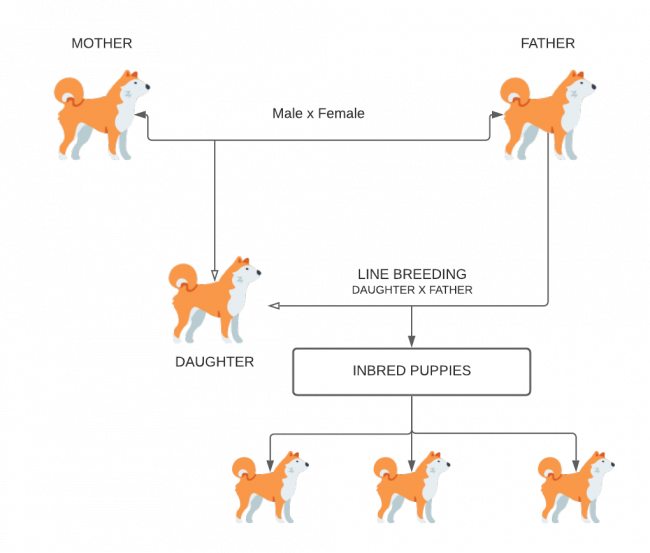
What is inbreeding?
Inbreeding is the mating of related individuals who have one or more ancestors in common. Linebreeding is a form of inbreeding.
Inbreeding reduces the genetic variation within that breed or population. Inbreeding has been a common practice in companion animals (and other domesticated species) as it increases the likelihood that animals will share desired traits such as their physical characteristics because they are genetically similar. Inbreeding has been the foundation for the development of pedigree(pure bred) breeds as it results in offspring who are predictably similar, because of the fact that their genetic similarity maintains specific traits from a common ancestor (i.e., the genetic similarity of dogs of the Labrador breed means they look the same; they look like a Labrador).
However, the effects of inbreeding accumulate within closed populations (e.g., within purebred breeds) and negative consequences can result from breeding parents who are too genetically similar. Inbred animals are more likely to have genetic defects and inherited diseases, which can be extremely detrimental to their health and welfare. Examples include Polycystic Kidney Disease in Persian cats (leading to kidney failure), hypertrophic cardiomyopathy in dogs and Mitral Valve Disease in Cavalier King Charles Spaniels (both diseases leading to heart failure), and spinal abnormalities in British and French Bulldogs, Boston Terriers and pugs.
In addition, inbreeding has other negative effects on the animals’ health (called inbreeding depression) including fertility problems, reduced survival and fitness of offspring, and weakened immune systems.
What is close inbreeding?
Close inbreeding is the intentional mating of close relatives. This includes mating first-degree relatives (e.g., full siblings [full brothers and sisters in human terms] and between parents and offspring) and second-degree relatives (e.g., grandparents and grand-offspring, half siblings, and related individuals equivalent to uncles/aunts and nephews/nieces, and double-first cousins in human terms).
Breeding from closely related animals predisposes the offspring to genetic defects or inherited disorders and inbreeding depression. Close inbreeding (breeding first and second-degree relatives), substantially increases the risk of genetic defects or inherited disorders and inbreeding depression and these occur at a faster rate, compared to inbreeding of less closely related individuals.
What is linebreeding?
Linebreeding is where breeders frequently choose to mate parents who have a common ancestor, but who are not as closely related as in close inbreeding (e.g., not first-degree and second-degree relatives). The aim is generally to improve or maintain specific traits within the breed. As a form of inbreeding, linebreeding is still associated with the risks to animal health and welfare described above.
Coefficient of Inbreeding
One method which is often used to measure the degree of inbreeding, or how closely related the parents are, is the Coefficient of Inbreeding (COI). COIs measure the genetic similarity looking back over generations of an animal’s pedigree (similar to a family tree for humans), not just whether the parent animals are close first and second-degree relatives. The higher the COI, the higher the probability that the parents are genetically similar and, consequently, the more likely it is that there will be problems in the offspring related to the accumulation of inbreeding effects (e.g., genetic defects, inherited disorders and inbreeding depression).
The European Union Responsible Dog Breeding Guidelines and the Dog Breeding Reform Group state that breeders should avoid breeding from individual dogs whose combined coefficient of inbreeding (the combination of both parents), measured over at least 10 generations, is greater than 6.5%.
In addition to assessing the COI or other measures of the degree of inbreeding, all breeding animals should undergo a check by a veterinarian to assess their health and suitability for breeding. Furthermore, breeding animals should undergo testing for any known inherited diseases and welfare problems in that breed (see below) and the results of these tests should be considered in the assessment of their suitability for breeding.
What is the location of the WDF?
Evidence shows that inbreeding has significant negative impacts on animal health and welfare. Therefore, the WDF opposes inbreeding of companion animals including first-degree matings (e.g. mother-child) and second-degree matings (e.g. grandparent-grandchild), as this increases the incidence of hereditary diseases and compromises of the immune system, both of which have a negative impact on the health and well-being of companion animals. People who keep pets must prioritize the health, behavior and welfare of both breeding animals and offspring. Parents who are not closely related and who are physically and behaviorally healthy should be chosen.


מזהה רוצה תודה על המאמצים יש לך לשים כותב את זה אתר . אני באמת מקווה לראות אותו בדרגה גבוהה פוסטים על ידך בעתיד גם כן. למעשה , יכולות הכתיבה היצירתית שלך יש השראה לי לקבל שלי מאוד משלו בלוג עכשיו;)
Thank you for your comment, we will try to update you on future articles.
“measured over at least 10 generations”. Niestety, na rodowodzie mam tylko 5 pokoleń.